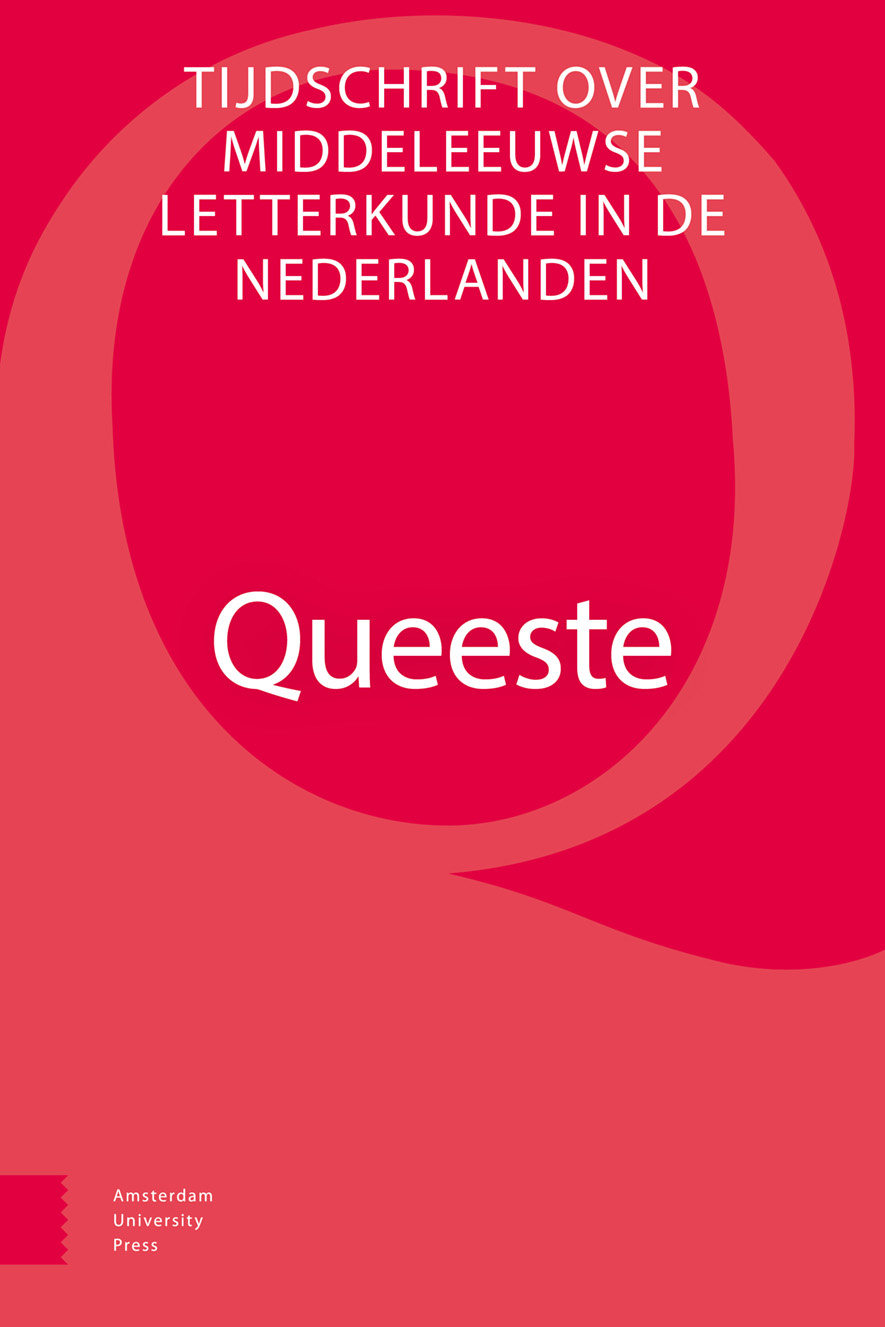- Home
- A-Z Publications
- Queeste
- Previous Issues
- Volume 30, Issue 2, 2023
Queeste - Volume 30, Issue 2, 2023
Volume 30, Issue 2, 2023
- Artikelen/Articles
-
-
-
Klerken en clergie ten tijde van Jan van Boendale
More LessAbstractJan van Boendale, the most important author writing on matters of lay morality and everyday ethics in Middle Dutch, lived in Antwerp from (before) 1312 until (maybe his death in) 1351. The article first concentrates on Boendale’s profession as a clerck, which, as it appears, has been a determining factor for his self-conception and identity together with the Latin artes dictaminis, from which he embraced the idea that the noble art of professional writing was also very usefull for the writer himself as it held promises of social promotion and prestige.
To correlate this to the historical reality, we try to draw up an image of what it meant to be a clerk in the Low Countries by the end of the thirteenth century, the time of Boendale’s youth. We conclude that vernacular clerks not only were by then very numerous, but also had remarkably diversified functions and careers, reaching from the simple production of documents, to very influential positions as secretaries of cities, lords and noblemen. The requirements to access the profession were quite modest. Training in the writing of specific documents would generally have taken place on the spot, under the guidance of an experienced master in the trade. So, Boendale, not only by his writting on the subject, but also by his own properous career as a scrivener and as a literary authority on ‘how to behave’, illustrates the emancipation and self-confidence of the ‘new’ clerck.
-
-
-
-
Verborgen tranen en verboden verlangens
More LessAbstractA key pillar in medieval courtly ethics was the principle of mesura, which prescribed a balanced and controlled experience of emotions. This courtly code of conduct has influenced Middle Dutch literature in general but is, according to previous research, particularly apparent in Lantsloot vander Haghedochte (c. 1250), a Middle Dutch adaptation of the Old French Lancelot en prose (c. 1215-1230). Frits van Oostrom (1981) examined the adaptation techniques of the Lantsloot-poet and noted a general tendency towards ‘idealization’, which also manifested itself in the display of emotions. Mainly in the case of grief, the Lantsloot-poet often reworked emotional expressions into ‘internalized experiences’, in which the grief is not (or less) shown to the outside world. According to Van Oostrom, such ‘internalizations’ were the result of the Lantsloot-poet’s preference for courtly mesura. In this contribution, I will argue that there are counter-indications that cast doubt on Van Oostrom’s hypothesis. Drawing on the recently developed theory of the ‘emotive script’ and ‘emotive literary identity’ (Rikhardsdottir 2017), I will present textual evidence indicating that the emotive script of ‘internalized grief’ does not primarily stem from the ideal of courtly mesura, but rather is linked to the concealment of intense, amorous or at least ‘private’ feelings.
-
-
-
Demophon, de andere ander in de Roman van Limborch
More LessAbstractIn the fourteenth-century epic Roman van Limborch the Saracens feature prominently. In particular, the Saracen character Demophon plays an important role in the second half of this extensive Middle Dutch chivalric tale. This article examines how the narrator of the Limborch relates to the conventional and stereotypical representations of the Saracens in contemporary epic literature. How does he vary in the degree of ‘otherness’ in representing the Saracens? I demonstrate that the narrator of the Limborch employs his method of ‘othering’ dynamically and selectively. His method of ‘othering’ cannot simply be explained as a striving for cultural and/or political expansion, as is common in modern conceptions of the motives for ‘othering’. The otherness of the Saracens in the Limborch, and that of Demophon in particular, serves primarily to problematize the relationships between the overarching story themes of love, friendship, and loyalty.
-
- Vondsten en mededelingen/Notes and announcements
-
-
-
Netwerkfilologie en het ecosysteem van het meest gelezen Middelnederlandse boek
More LessAbstractThis contribution introduces the project Pages of Prayer: The Ecosystem of Vernacular Prayer Books in the Late Medieval Low Countries, c. 1380-1550 [prayer] (erc Starting Grant, grant no. 101041517), which started at Leiden University on 1 March 2023. The aim of the project is to conduct the first large-scale investigation into the vast corpus of Middle Dutch prayer books of which the mainstay are books with one or more of the texts of ‘the Book of Hours’ in the translation ascribed to Geert Grote (1340-1384). Pages of Prayer aims to chart the entire ‘ecosystem’ in which the Dutch-language prayer books flourished and thrived. Apart from the shared transmission of texts in manuscripts and printed books, the project aims to map the inclusion of images, the roles of producers, owners, patrons, places, devotions, and the relations between all of these aspects over a long period of time by developing a cross-disciplinary approach: network philology. This approach aims to combine quantitative network analysis with advanced qualitative analysis to reach meaningful interpretations of the data.
-
-
- Recensieartikelen/Review articles
-
- Reactie
-
- Artikelen
-
Volumes & issues
Most Read This Month


